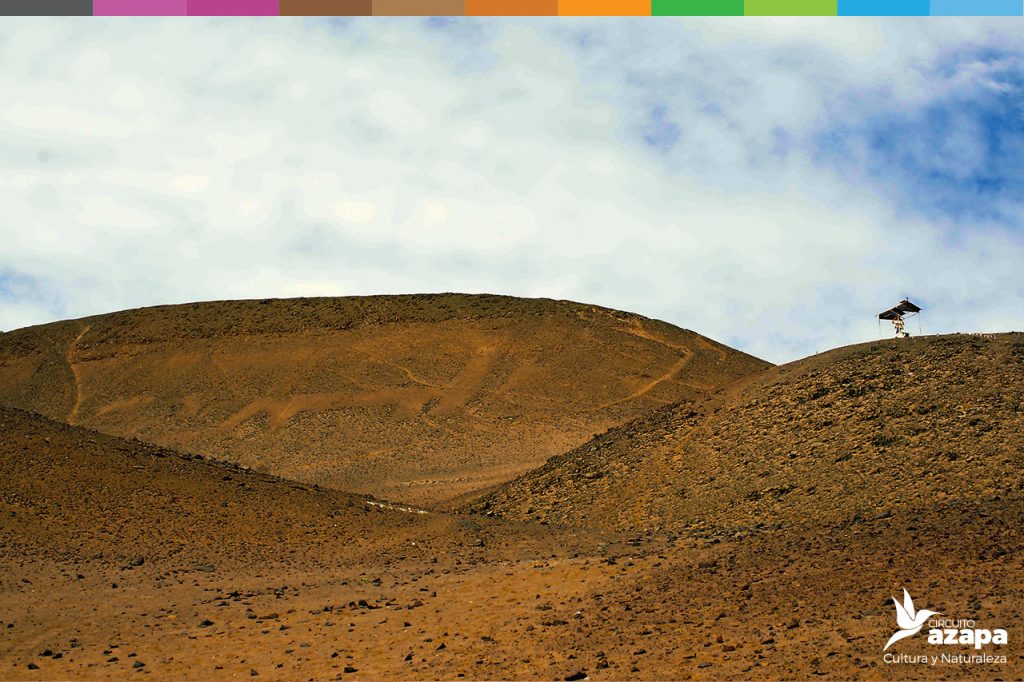“La Gran Llama” (“The Big Llama”)
“La Gran Llama”
Km 3,5 Ruta A-133
(19 K 366926.00 m E 7952603.00 m N)
Evidencias:
-Geoglifo La Gran Llama (AZ-62)
“The Big Llama”
Km 3,5 Route A-133
(19 K 366926.00 m E 7952603.00 m N)
Evidences:
-The Big Llama geoglyph (AZ-62)
Las llamas fueron de gran valor en el mundo andino, no sólo como recurso alimenticio y por su lana, sino también, por su capacidad de carga, que permitió una intensa movilidad de caravanas entre los distintos ecosistemas de los Andes, facilitando el tráfico de personas, bienes e ideas.
Además, este camélido es considerado un animal sagrado por las comunidades andinas. Desde tiempos inmemoriales ha sido parte importante en ofrendas realizadas a la “pacha mama”, madre tierra, a quien se ofrece como forma de retribución por los bienes que esta deidad maternal entrega al hombre y para propiciar la fertilidad agrícola.
El geoglifo La Gran Llama se realizó mediante técnica sustractiva, raspando la superficie del suelo para destacar la figura.
The Big Llama geoglyph is located in the Cerro Sombrero area. It is characterised by a rectangular style design, with legs arranged in pairs and a long and straight neck. This figure does not show head nor tail, which have deteriorated over time.
The llamas were of great value in the Andean world, not just as food resource or for its wool, but also for its load capacity. This load capacity allowed for a powerful caravan mobility between the different ecosystems of the Andes, facilitating the traffic of people, goods and ideas.
Further, this camelid is considered a sacred animal by the Andean communities. Since time immemorial, the llama has taken an important role in offerings to the “Pacha mama”, Mother Earth. It is offered to her in exchange for the goods that this maternal deity delivers to men and to help favour agricultural fertility.
The Big Llama geoglyph was made with a subtractive technique, scratching the soil’s surface to enhance the figure.

